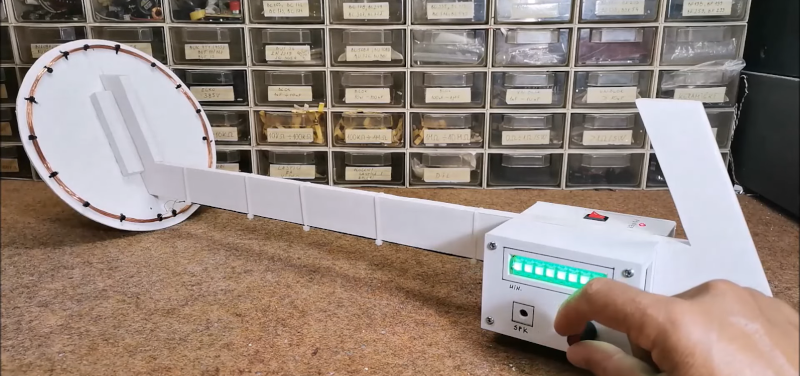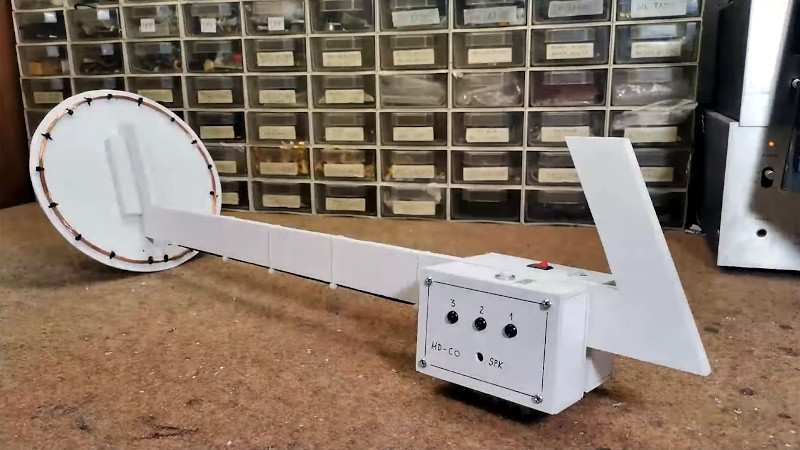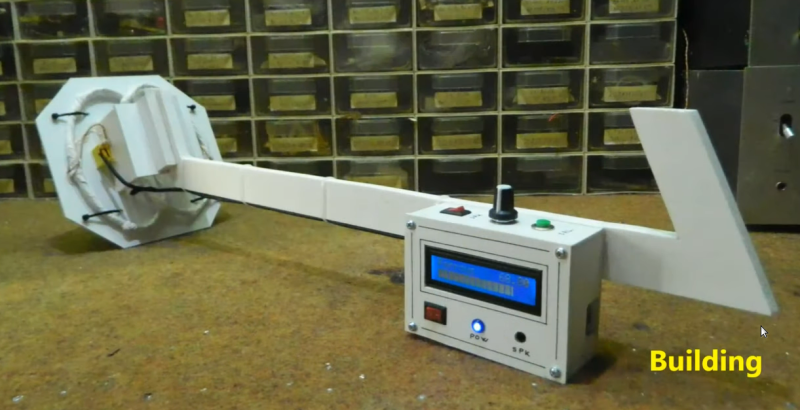
If you want to get rich by hunting with a metal detector, you might want to consider how much you invested in the hardware to start with. Finding a tin can with a $200 detector might not make economic sense. But building a metal detector yourself doesn’t have to be hard, as [Mirko] shows in a recent post. His STM32-based pulse induction metal detector looks good and works well, as you can see in the video below.
[Mirko] reports that the device can detect a coin at 30 cm and a large metal object at more than 80 cm. The project uses the Arduino IDE and a Blue Pill STM32 module. The project looks good with an LED module and a rotary encoder to set sensitivity.
Pulse induction metal detectors use a single coil to send and receive short pulses. This differs from the more common BFO-style which uses two frequencies that produce a beat frequency that changes in the presence of metal. These use two coils and are more affected by mineralization — the interference caused by minerals in the soil — and general interference. Typically, BFO detectors have less sensitivity, especially at a distance.
This isn’t the first pulsed induction detector we’ve seen. Of course, for a simple one you can — to forestall comments — use a 555.






